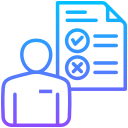Measuring Impact and ROI
Combine early signals like feedback quality, coaching participation, and peer recognition with outcomes such as cycle time, rework reduction, and promotion readiness. This balanced view connects human behavior changes to tangible performance improvements over time.
Measuring Impact and ROI
As soft skills improve, people feel supported and capable. Monitor retention of high performers, internal mobility, and succession coverage to show how evaluation strengthens your leadership pipeline and reduces costly external hiring.






